Advertisements
Advertisements
प्रश्न
In the given parallelogram YOUR, ∠RUO = 120° and OY is extended to point S such that ∠SRY = 50°. Find ∠YSR.
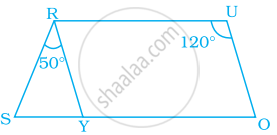
उत्तर
Given, ∠RUO = 120° and ∠SRY = 50°
∠RYO = ∠RUO = 120° ...[∵ Opposite angles of a parallelogram]
Now, ∠SYR = 180° – ∠RYO ...[Linear pair]
= 180° – 120°
= 60°
In ΔSRY,
By the angle sum property of a triangle,
∠SRY + ∠RYS + ∠YSR = 180°
⇒ 50° + 60° + ∠YSR = 180°
⇒ ∠YSR = 180° – (50° + 60°)
⇒ ∠YSR = 180° – 110°
∴ ∠YSR = 70°
APPEARS IN
संबंधित प्रश्न
In a parallelogram `square`ABCD, If ∠A = (3x + 12)°, ∠B = (2x - 32)° then find the value of x and then find the measures of ∠C and ∠D.
In the following figure, ABCD and PQRS are two parallelograms such that ∠D = 120° and ∠Q = 70°.
Find the value of x.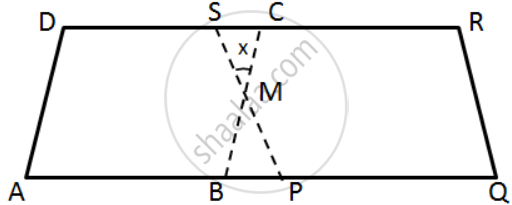
In case of a parallelogram
prove that:
(i) The bisectors of any two adjacent angles intersect at 90o.
(ii) The bisectors of the opposite angles are parallel to each other.
In the given figure, AP is the bisector of ∠A and CQ is the bisector of ∠C of parallelogram ABCD. 
Prove that APCQ is a parallelogram.
In the following figures, find the remaining angles of the parallelogram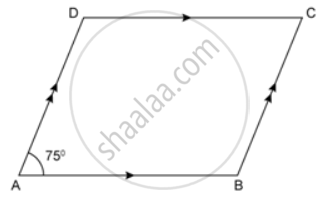
In the following figures, find the remaining angles of the parallelogram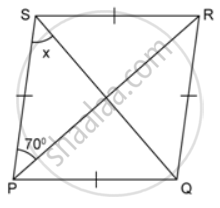
Find the measures of all the angles of the parallelogram shown in the figure: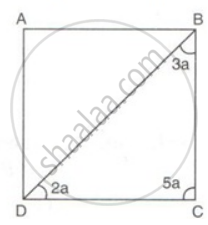
In the given figure, ABCD is a parallelogram, find the values of x and y.
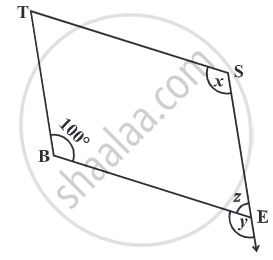
The sum of adjacent angles of a parallelogram is ______.
